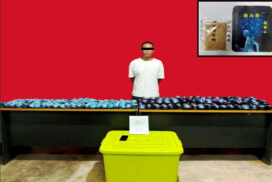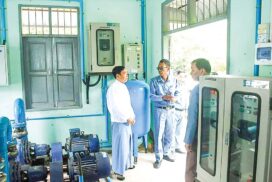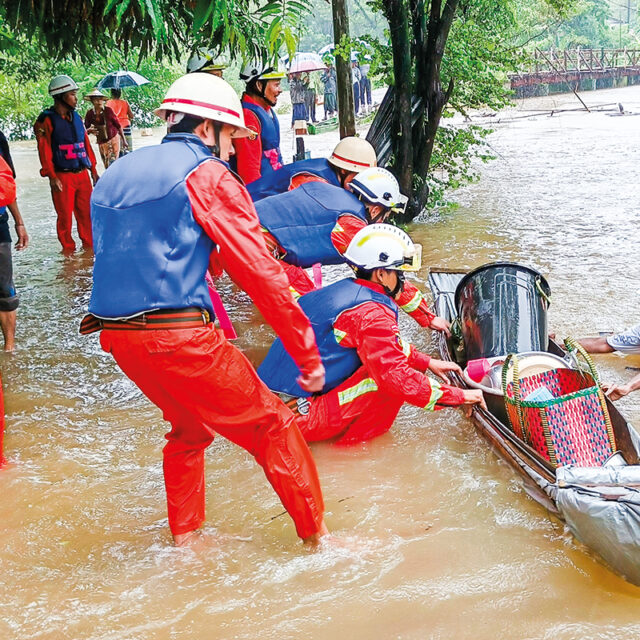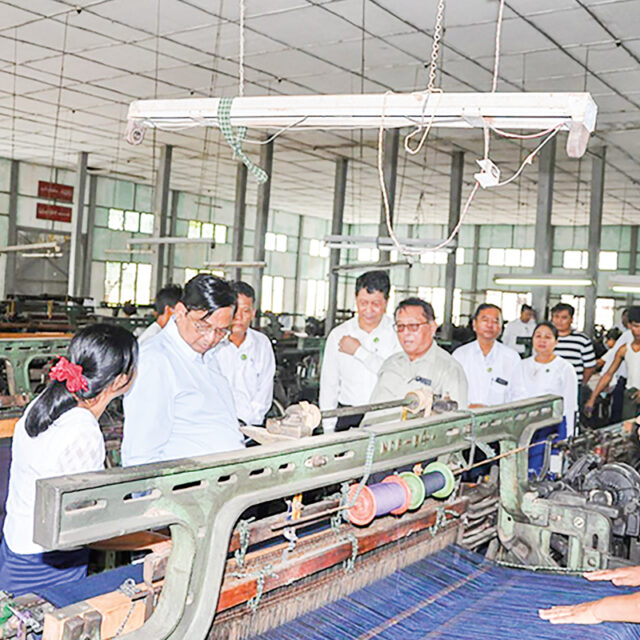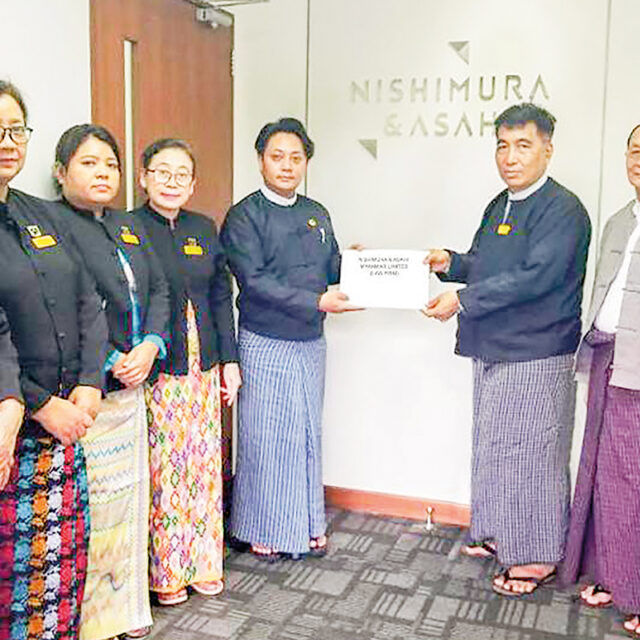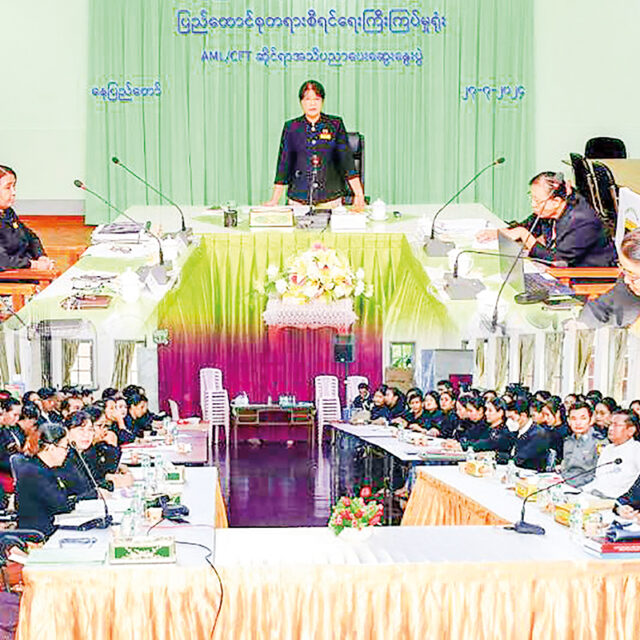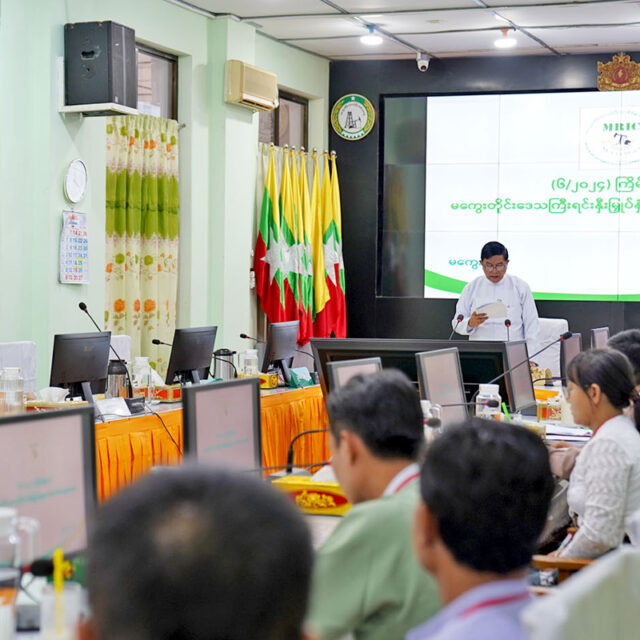By Kaung Aung
Every day in the morning and evening, I happen to walk along this street. I notice a particular item every day whenever I pass a particular location, so my experiences of walking along the street in the morning and evening are very different. When I first saw that event, I had a feeling that I had never been able to identify before. Soon I realized my particular feeling is something like feeling of stinginess or feeling sorry for losing something that I never own. In that location, the open tap that releases water into a tin container (or occasionally a plastic container) and water spilling over to the ground are the things, I notice every day.
Man creates values, and he is also the one who disregards them. Man commits something wrong when he cannot determine whether his action is right or wrong and he is also brave enough to do so. I have to say people waste water or use more than necessary amount for he does not realize the value of it. So I would like to present about the facts of ground water which we use daily.
The importance of water
Safe and clean water plays a critical role in survival of humans and animals, despite lack of nutrition and calories in it. There are countries and peoples facing shortage of clean drinking water as the people who are facing food insecurity. Experts predict that by 2025 almost half of the world’s population could suffer from some form of water-borne disease. And nearly 3,500 million people in developing countries could suffer water shortages by 2050, according to a UN report on the state of the world’s water.
Fresh water needed for people
In addition to being essential for human, animal, and plant survival, fresh water promotes a nation’s economic growth. Nearly a billion people currently lack access to safe and clean water, endangering their health, education, and professional prospects. More than 2.3 billion people still do not have basic sanitation services. This situation prompted the United Nations to launch the International Decade for Action, “Water for Sustainable Development”.
A person is said to be living in a water-scarce area where, on average, he receives less than 164 cubic feet of water a day. People in Myanmar receive 1,032 cubic feet of fresh water, compared to 320 cubic feet for residents of neighbouring Thailand and 156 cubic feet for residents of India. Myanmar is considered to be a water resource rich country as it has many freshwater resources such as the Ayeyawady, Chindwin, Thanlwin, Sittoung rivers and many freshwater creeks, lakes and ponds. With a daily water consumption of 30 gallons per person in urban areas and 15 gallons in rural areas, Myanmar is ranked number eight in the world for the availability of freshwater, according to the researchers.
The role of ground water
People use ground water because clean freshwater cannot be obtained from rivers, creeks, or lakes but only in large quantities from the ground. Ground water can be obtained easily and cheaply in almost every location by establishing a tube-well and so more than 2,000 million world population rely on ground water for drinking and use it for 40 per cent of food production. So sustainable and ever-clean subsurface water resources are essential for the survival of humanity in the future. If the aforementioned condition is to be maintained, the ground water resources must be protected from industrial, mining, and agricultural wastes.
People in Yangon city have been utilizing ground water since about 1842. Under the British colonial rule, the government passed a law to regulate ground water use based on the ratio of natural availability to human consumption.
Ground water is the main source of supply for recently established townships in the Yangon region. There are more than three thousand wells, according to a study done between 1990 and 1991. Furthermore, according to certain records, freshwater sank into the earth at a very good rate of 16.7 inches per year, resulting in an acceptable subsurface freshwater reserve.
Areas around Mingaladon township and its northern neighbour town of Htaukkyant were used to be open space and had been known as recharged areas where rainwater infiltrate into the ground. These areas are now incorporated into outskirts and covered in factories and homes. Some areas are now covered with concrete or asphalt roads, turning them into impervious layers where rainwater once found its way to the ground. Poor recharged rates as a result of this phenomenon result in weaker subsurface water storage level, while an increase in discharged rates is brought on by the expansion of wells.
Saltwater replaces ground freshwater layer of Yangon
According to hydrogeologist U Myint Thein, areas that are close to the sea, rivers, and creeks have already experienced instances where saltwater has replaced freshwater. “With the changes in climate, quality of ground water may become poor by about 2040. Pepole can use ground water at that time, but the quality of it may be quetionable. I can say ground water may be available in coming decades because saltwater is gradually replacing the fresh water in subsurface storage areas as the freshwater recharge becomes worse. The existence of fresh ground water depends on the states of saltwater. The layer of freshwater lies above the layer of saltwater as the latter has a higher density of 1.02 while the former has 1. If the volume of freshwater declines, it will be contaminated by the saltwater layer, turning the well water salty. When the water in a well becomes such a situation, people use to say the well is spoiled,” he said.
Townships in the Yangon Region, such as Hlinethaya, Shwepyitha, Insein, Hline, Ahlon, and the river bank opposite Kyimyindine (the proposed area of a new satellite town), which are located close to the Hlaing, Panhlaing, Bago, and Yangon rivers as well as Pazundaung Creek, have the potential to be contaminated by saltwater. Some areas of Ahlon and Kyimyindine townships have already contaminated by saltwater, according to Daw Tu Mar, a real estate broker.
Growing population and tube-wells
Almost all the townships in Yangon have tube-wells today as the number of such wells rose significantly since the years 1988-90. With the increased number of new buildings and population, 60 per cent of Yangon residents acquire drinking water from not less than 300,000 tube-wells. The Underground Water Act (1930) formally enforced by the Department of Urban and Housing Development, under the Ministry of Construction may have lost its role.
As the number of tube wells grows each year, the amount of ground water being used rises while the rate at which rainwater is absorbed into the ground declines. Such an imbalanced state of groundwater recharge and discharge can result in a decrease in groundwater storage, which in turn causes the confining bed, an underground soil layer, to sink. Buildings may sink as a result of this type of sinking, which can also damage them.
The residents of Yangon could find themselves in such a situation if, according to calculations by some experts, the use of the city’s groundwater is not properly managed.
Beware of El Niño weather patterns
On 3 May of this year, the United Nations issued a warning regarding the increasing likelihood of El Niño weather patterns and the potential for a rise in the earth’s temperature to record highs. According to the World Meteorological Organization outlook, there is about a 60 per cent chance that El Niño will form at the end of July, and an 80 per cent chance it will form in late September. Petteri Taalas, the secretary-general of the meteorological organization (WMO) warned that the world should prepare to brace for the unfavourable weather situation ahead as the global temperatures are likely to surge to record levels fuelled by a naturally occurring El Niño weather pattern bringing drought and some adverse weather pattern in some parts of the world.
Due to the rising global temperatures and the potential for increased ground water use as a result of the city’s expanding population, residents of Yangon city may eventually experience ground water scarcity. To be able to brace for the unavoidable disaster of future, city’s residents should limit their use of water while experts and relevant government departments develop action plans to combat the impending unfavourable situation of ground water shortage.
Translated



